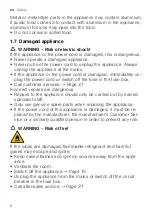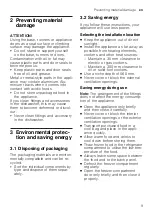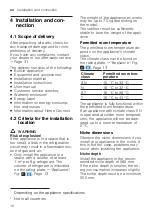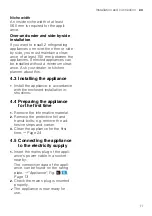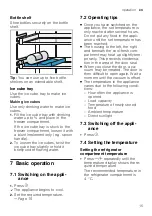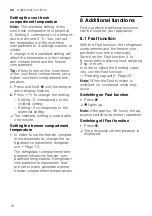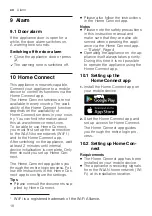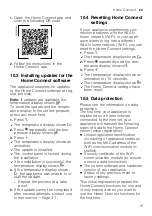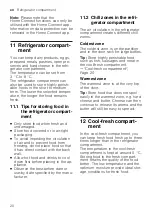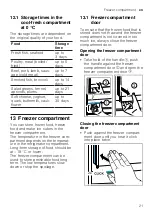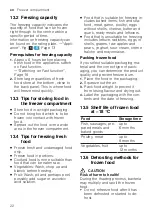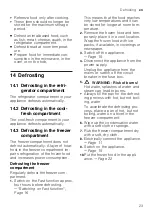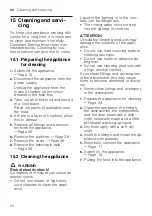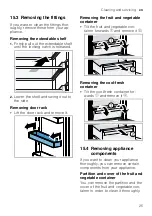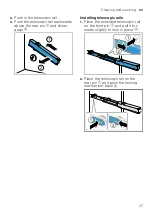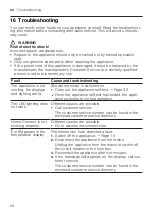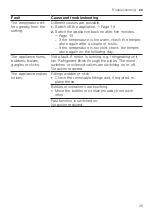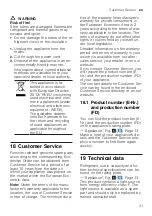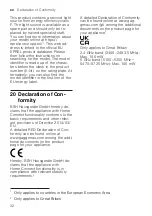
en
Refrigerator compartment
20
Note:
Please note that the
Home Connect functions can only be
utilised with the Home Connect app.
Information on data protection can be
retrieved in the Home Connect app.
11 Refrigerator compart-
ment
You can keep dairy products, eggs,
prepared meals, pastries, open pre-
serves and hard cheese in the refri-
gerator compartment.
The temperature can be set from
3 °C to 8 °C.
The refrigerator compartment can
also be used to store highly perish-
able foods in the short to medium
term. The lower the selected temper-
ature, the longer the food remains
fresh.
11.1 Tips for storing food in
the refrigerator compart-
ment
¡
Only store food when fresh and
undamaged.
¡
Store food covered or in air-tight
packaging.
¡
To avoid impeding the circulation
of air and to prevent food from
freezing, do not place food so that
it has direct contact with the back
wall.
¡
Allow hot food and drinks to cool
down first before placing in the ap-
pliance.
¡
Observe the best-before date or
use-by date specified by the manu-
facturer.
11.2 Chill zones in the refri-
gerator compartment
The air circulation in the refrigerator
compartment creates different chill
zones.
Coldest zone
The coldest zone is on the partition
and in the door rack for large bottles.
Tip:
Store highly perishable food
such as fish, sausages and meat in
the cool-fresh compartment.
→
Warmest zone
The warmest zone is at the very top
of the door.
Tip:
Store food that does not spoil
easily in the warmest zone, e.g. hard
cheese and butter. Cheese can then
continue to release its aroma and the
butter will still be easy to spread.
12 Cool-fresh compart-
ment
In the cool-fresh compartment, you
can keep fresh food fresh up to three
times longer than in the refrigerator
compartment.
The temperature in the cool-fresh
compartment is kept at around 0 °C.
Storing food in the fresh compart-
ment retains the quality of the food
better. The low temperature and the
optimum moisture provide ideal stor-
age conditions for fresh food.



